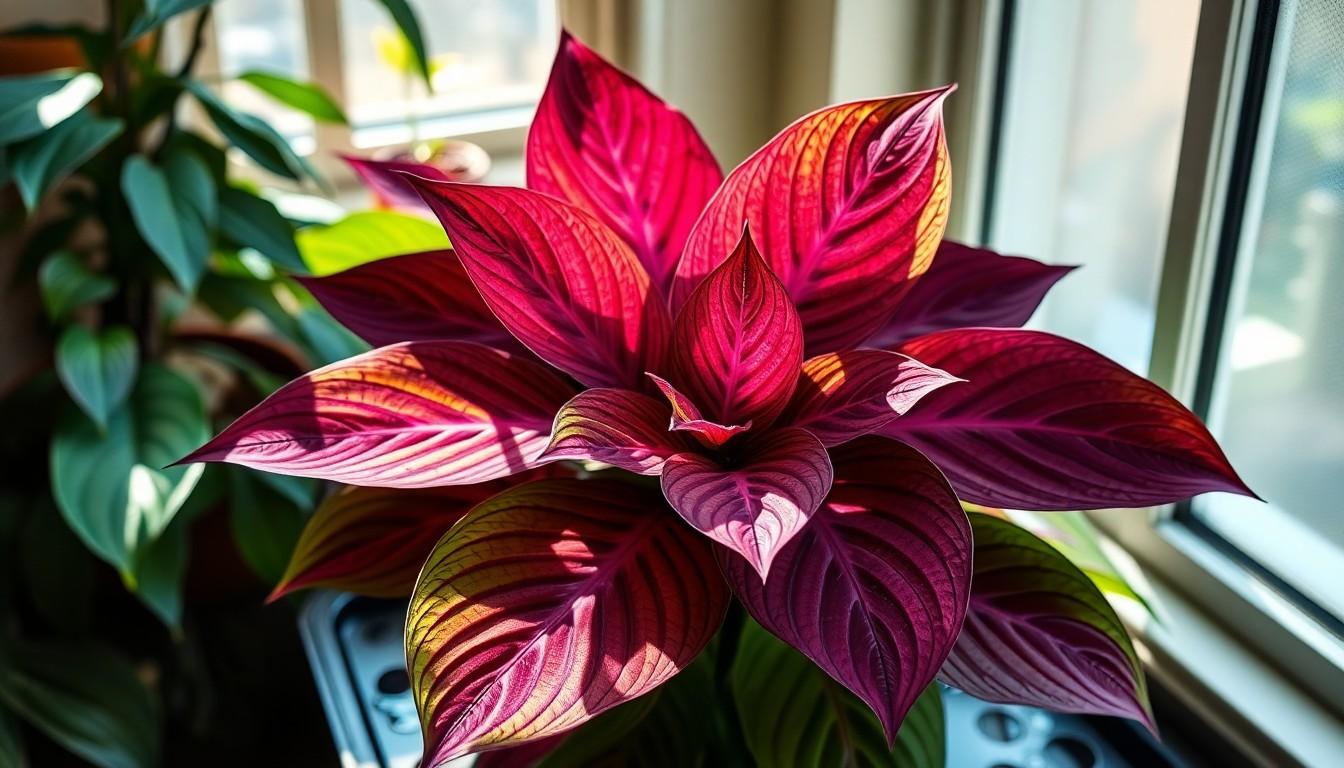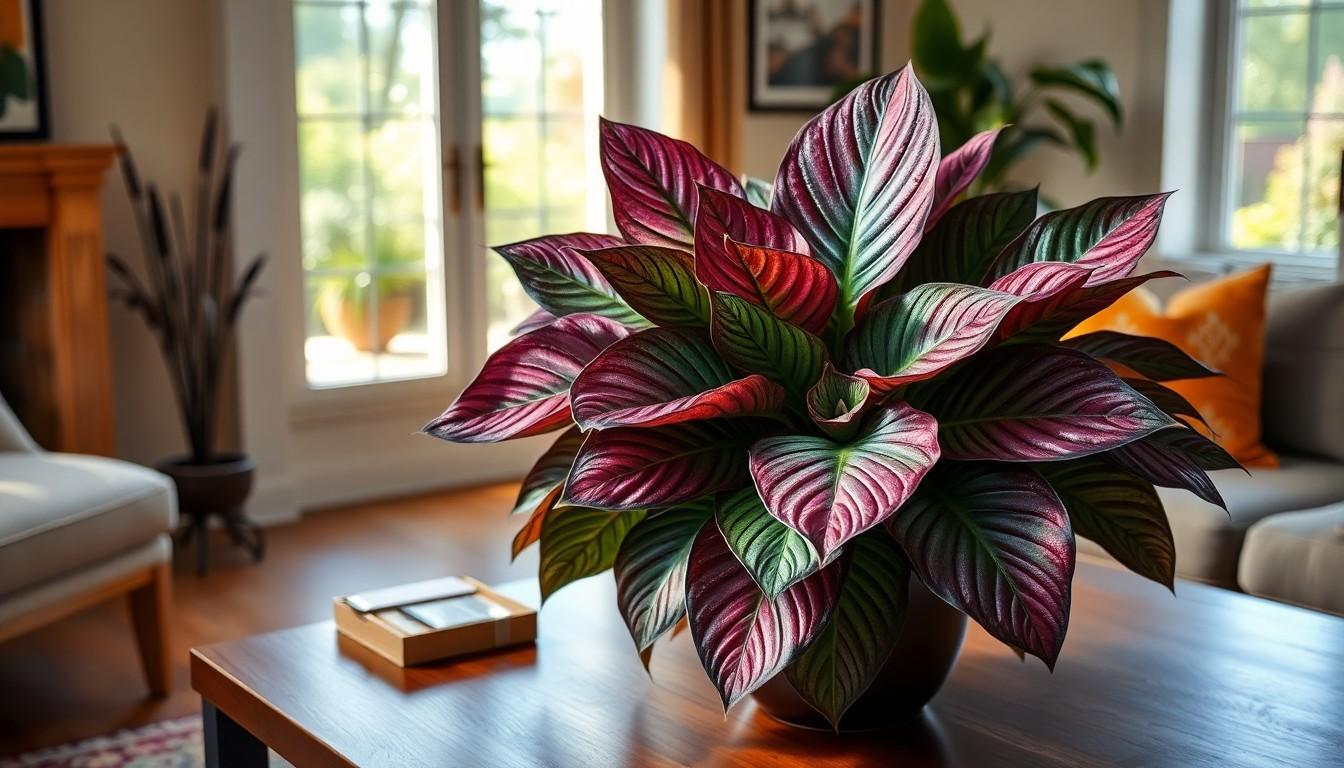Looking to add a splash of color to your indoor jungle? The Persian shield plant is here to save the day! With its stunning iridescent leaves that seem to change color with the light, this tropical beauty is like the diva of houseplants—demanding attention and a little TLC. But don’t worry, caring for this gem isn’t rocket science; it just requires a sprinkle of knowledge and a dash of love.
Overview Of Persian Shield Plant
The Persian shield plant, known scientifically as Strobilanthes dyerianus, offers a stunning display of colors that captivates plant enthusiasts. Commonly found in tropical regions, it thrives in environments that mimic its native habitat. Growth typically ranges from 3 to 4 feet in height, providing ample visual interest for any indoor space or garden setup.
Iridescent leaves present a unique palette, showing shades of purple, green, and silver that change based on light conditions. Regular watering keeps the soil consistently moist, but it’s crucial to avoid waterlogging. Consistent humidity is also essential; misting the plant or placing it near a humidity tray promotes healthy growth.
Lighting plays a significant role in the health of this plant. Bright, indirect light produces the most vibrant coloration. When exposed to direct sunlight, leaf burn can occur, diminishing its aesthetic appeal. Fertilizing every four to six weeks during the growing season supports robust growth; a balanced, water-soluble fertilizer works well.
Pest management remains important for Persian shield plants. Watch for common pests like spider mites and aphids, as early detection and treatment help maintain plant health. Pruning may also be necessary to encourage bushier growth and manage unwanted leggy stems.
Finally, propagation is possible through stem cuttings, making it accessible for gardeners wishing to expand their collection. Overall, the Persian shield plant considerably enhances indoor spaces, bringing an exquisite touch of nature inside.
Essential Growing Conditions

Persian shield plants thrive when provided with optimal growing conditions. Each aspect of their care plays a crucial role in maintaining health and vibrancy.
Light Requirements
Bright, indirect light is essential for Persian shield plants. Direct sunlight can scorch their delicate leaves, leading to discoloration. Keeping them in a well-lit room helps sustain their striking colors. A location near a window with filtered light yields the best results. If natural light is limited, using artificial grow lights can supplement the needed illumination.
Temperature Preferences
Persian shield plants prefer temperatures ranging from 65°F to 80°F. They tolerate slightly cooler environments but struggle in extremes. Sudden temperature drops or poorly heated rooms may stress the plant, causing potential leaf loss. Maintaining a stable environment ensures the plant stays healthy. Avoid placing it near drafts or heat sources for best results.
Humidity Levels
High humidity levels significantly benefit Persian shield plants. Ideally, humidity should remain between 50% and 70% for optimal growth. Using a humidifier or placing a tray of water near the plant can increase moisture levels. Regular misting helps maintain humidity, especially in drier indoor climates. Insufficient humidity leads to browning leaf tips, which signals environmental stress.
Soil and Potting Needs
Proper soil and potting methods are vital for the Persian shield plant’s health and growth. This plant thrives in nutrient-rich, well-draining soil that retains moisture without becoming waterlogged.
Soil Composition
A mix that combines potting soil with perlite or coarse sand works exceptionally well. This combination ensures good drainage while providing essential nutrients. Opt for a pH level between 6.0 and 7.0 for optimal growth. Organic matter, such as compost, can enhance soil fertility and help maintain moisture. Regularly checking soil moisture levels is essential to prevent root rot while maintaining vibrancy.
Potting Methods
When potting, choose a container with drainage holes to facilitate excess water removal. These holes help prevent water accumulation, protecting root health. Select a pot approximately 1-2 inches wider than the current one to allow for growth. Use a gentle hand when repotting, avoiding root damage. Position the plant at the same soil depth as before to maintain stability. After potting, water lightly to help settle the soil and encourage root establishment.
Watering Guidelines
Watering the Persian shield plant requires careful attention. This vibrant plant thrives with consistent moisture but hates waterlogged conditions.
Frequency and Amount
Water the Persian shield plant when the top inch of soil feels dry. Typically, this occurs every 5 to 7 days during the growing season, but frequency may change in cooler months. Use enough water to saturate the soil thoroughly, allowing excess to drain out. It’s essential to ensure that the pot has drainage holes to prevent standing water. Adequate moisture retention supports healthy leaf growth and color vibrancy.
Signs of Overwatering and Underwatering
Recognizing signs of overwatering is crucial for the Persian shield plant’s health. Yellowing leaves often indicate excessive moisture, while wilting might suggest underwatering. If leaves fall off or develop brown edges, these issues can arise from both problems. Additionally, mushy roots usually signal overwatering, leading to root rot. Checking the soil moisture level can help identify the problem. An ideal approach includes monitoring and adjusting the watering schedule based on the plant’s needs.
Fertilization Tips
Proper fertilization supports vibrant growth in Persian shield plants, enhancing their striking colors and overall health.
Types of Fertilizers
Balanced fertilizers provide essential nutrients suited for Persian shield plants. Liquid fertilizers, such as a 20-20-20 formula, deliver nutrients quickly and effectively. Slow-release granular fertilizers offer a longer-lasting option, releasing nutrients gradually over time. Organic choices include fish emulsion or seaweed extracts, which enrich the soil naturally. Each type contributes differently, and selecting the right fertilizer boosts the plant’s vitality while maintaining their visual appeal.
Feeding Schedule
Establishing a consistent feeding schedule promotes healthy growth in Persian shield plants. Fertilization every four to six weeks during the active growing season supports optimal development. Apply fertilizer after watering to prevent root burn and enhance nutrient absorption. During the dormant winter months, reduce feeding to once every two months, as the plant’s nutrient needs decrease. Observing the plant’s response helps adjust the schedule as necessary, ensuring optimal health and display.
Common Pests and Diseases
The Persian shield plant is prone to various pests and diseases that can affect its health. Recognizing issues early helps in maintaining its vibrant appearance.
Identification and Prevention
Common pests include spider mites, aphids and mealybugs. Early signs of infestations appear as discolored leaves or small webbing. To prevent these pests, maintain humidity levels and ensure the plant receives adequate airflow. Regularly checking under leaves for pests keeps infestations at bay. Consider using insecticidal soap or neem oil as a preventive measure to protect against these pests.
Treatment Options
Treating infestations promptly is essential to avoid further damage. Remove pests manually whenever possible using a soft cloth or gentle water spray. For stubborn infestations, applying insecticidal soap or neem oil works effectively. Repeat treatments every seven to ten days until the pests are gone. Fungal issues, typically indicated by yellow or brown spots, often require the application of a fungicide or improved air circulation. Adjusting watering habits helps prevent both root rot and fungal growth.
Conclusion
Caring for the Persian shield plant can be a rewarding experience. Its stunning foliage and vibrant colors make it a standout choice for any indoor space. By following the proper care guidelines such as maintaining humidity and providing adequate light, plant enthusiasts can enjoy this beauty for years to come.
Regular attention to watering and pest management will keep the Persian shield thriving. With a little love and the right conditions, it’ll undoubtedly become a cherished part of any plant collection. Embracing the unique qualities of this plant not only enhances home aesthetics but also brings a touch of nature indoors.

